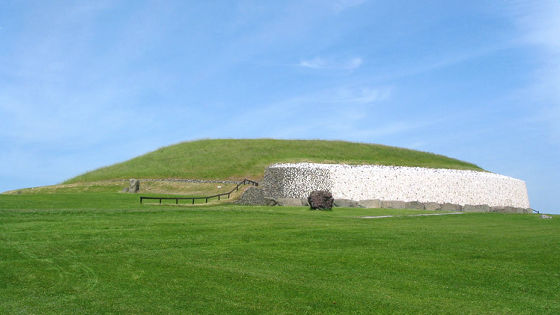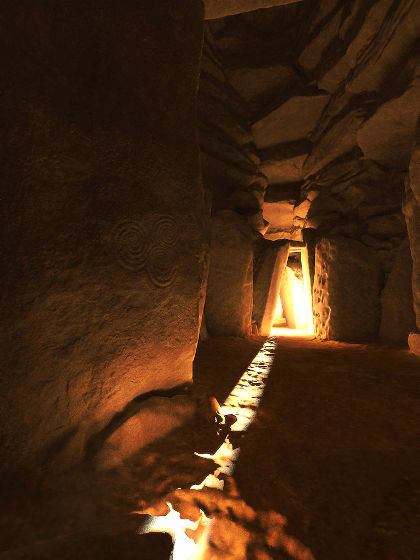It is reported by DNA analysis of the ashes that the concentration of power by consanguinity may have been carried out for 5000 years ago

DNA analysis revealed that the remains found in an ancient Irish cemetery may have been born in a consanguineous marriage. The remains are about 5,000 years old and it is believed that the ancient graveyard was a tomb of the upper class, so it is speculated that 5000 years ago there was concentration of power by consanguinity. ..
A dynastic elite in monumental Neolithic society | Nature
DNA from ancient Irish tomb reveals incest and an elite class that ruled early farmers | Science | AAAS
https://www.sciencemag.org/news/2020/06/dna-ancient-irish-tomb-reveals-incest-and-elite-class-ruled-early-farmers
Newgrange , an ancient joint cemetery in Ireland where the remains were found, is a cemetery made of soil and stone as follows, and more than 200,000 tons of soil and stone were used for construction. The Newgrange is estimated to have been built around 3100 BC, more than 500 years before the Great Pyramids of Giza were built.

The Newgrange has a straight aisle leading to the central room, with the entrance oriented to illuminate the room with the sunrise of the shortest winter solstice of the year. Newgrange-like features of passages have been found in many Irish ancient burial grounds, 'apparently a public ceremonial site, which must have required a lot of manpower to build,' says

By
Most of the bodies buried in the Newgrange had been cremated, but a finely carved stone indentation found the body of one uncremented man. Cassidy and his colleagues labeled the male remains as 'NG10' and succeeded in extracting DNA from the ossicles of the inner ear of NG10. Comparing the DNA of NG10 with the DNA of the bodies buried at the same time as NG10 and the DNA of people who lived on the island for centuries, NG10 arrived in Ireland as part of a large-scale migration Neolithic It turned out to be the DNA of the farmers of the times .
In addition, it is speculated from the DNA analysis results that NG10 was born by consanguinity and that the parents had a sibling or parent-child relationship. 'The DNA of the strongly-related ancients left in the Newgrange suggests that the social hierarchy was well established in Ireland,' said Jessica Smith, archeologist at Trinity College Dublin. In addition, NG10, which was buried in a large grave like Newgrange, 'may have been in the upper class of the ancestors,' Cassidy argues.

Cassidy and colleagues report that DNA from more than 40 bodies buried in several Irish graveyards, except Newgrange, also reveals closely related upper-class relationships. That. People buried in large tombs tended to be more closely related to each other than those buried in smaller tombs. It was discovered that people buried in large, distant tombs also had strong kinship. In addition, the bodies that were buried included multiple women and children, saying, 'Social status was not acquired for one generation, and it may have been inherited and maintained for many generations. 'Cassidi speculates.
Upscale and royal consanguinity was also accepted in ancient Egypt and Iran because it concentrated power in one family. “I think there was a similar focus of power among Irish immigrants during the Neolithic period,” Cassidy speculates. However, some archaeologists are cautious, 'should not generalize that there was a posh power concentration in Ireland from a few burials.'
To reveal the details of upper-class consanguinity in Ireland, it is necessary to compare DNA with people buried in ancient tombs in England and France to discover the tendency of ancient consanguinity thing. 'The question is whether the upper class consanguineity was born in Ireland, or was the immigrant's concentration of powers brought into the island by immigrants. Upper class consanguinity can be found elsewhere. I'm really looking forward to the investigation,' said Cassidy.
Related Posts:
in Note, Posted by darkhorse_log







